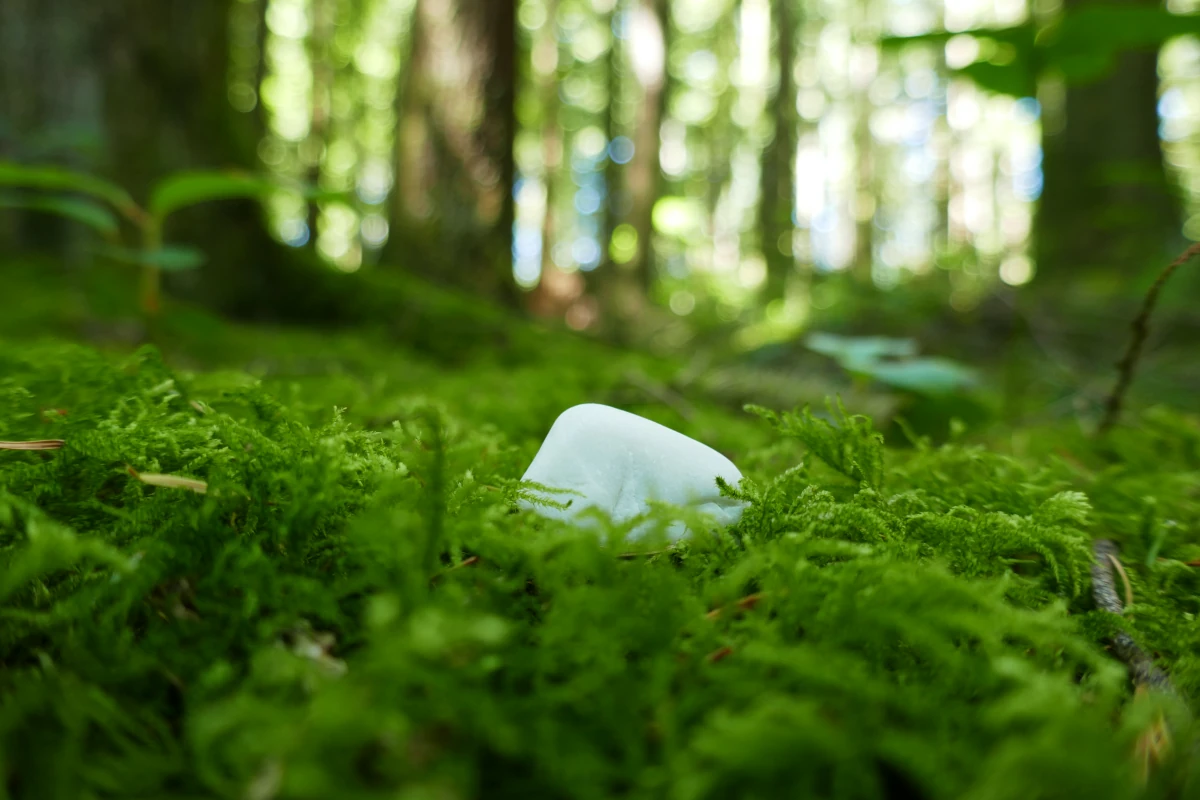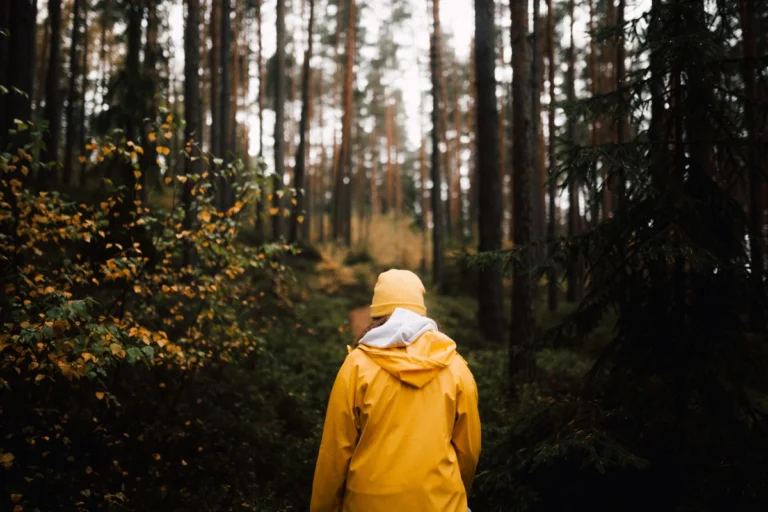The White Stone in the Mossy Forest
At one time there was a trail, my mom insisted, though I had my doubts. We were somewhere in the bush on Little Nicomen Mountain, between an old logging road and the back of Raven Bluffs. We’d made a loop, going from the bluffs to the cabin to the hang-glider launch, then down some logging roads and into the forest. The connection between the road and the bluff was long gone, so we were flagging a route through.
It was a bushwhack, and a little bit spooky. As we were passing through a mossy area dotted with ferns, my eye caught a bit of white. There, sitting on the moss, completely out of place, was a small white stone. There were certainly rocks down at the creek at the base of the mountain, but nothing that would explain a single stone up there in the middle of the woods where there were no other rocks around.
Six years earlier, my mom had the same experience. She and my dad were bushwhacking near the top of a loop trail when she found the same thing: a small white rock sitting in the moss in the middle of the forest. I knew the story because she’d kept it and had it on display in the house with other treasures collected over the years. She’d even written on the back how and where she’d found it.
Both stones were white quartz, or milky quartz, which is abundant in our province, found in streambeds, glacial till, and rockslides. The stones had been smoothed to roundness, meaning they had once spent time in water. Finding them in the middle of a mossy forest made them feel almost deliberately placed. So how did they get there?
White Stones in Mythology
Many people believe in signs, and even though it may not be apparently what they mean, they must mean something. Finding a stone sitting out of place in the woods certainly feels meaningful. While nothing definitive turns up online about white stones found in the middle of mossy forests, they do feature in mythology and tradition around the world.
- In Christian mythology, white stones appear in at least one bible story and are said to represent acceptance, reward, victory, purity, and freedom.
- In Greek mythology, white quartz was called krystallos, and said to be ice created by the gods that never melted.
- Australian Aboriginal cultures used it in rainmaking ceremonies.
- In Irish tradition, white quartz and clear quartz crystals are often found in grave mounds and sacred sites. They’re associated with ancient rituals and the dead. They also symbolize the presence of the faerie folk, sometimes marking their dwellings.
In North American indigenous traditions, stones hold spiritual power. In the Fraser Valley, the Stó:lō tell stories of people transformed to stone. One of the most well-known is the transformer stone at Xá:ytem (HAY-tum), where the Creator Xá:ls turned three chiefs to stone after they didn’t share the gift of language that he gave them. Nicomen Mountain itself is also the site of a transformer story.
Ravens and Rocks
The presence of these white stones in the forest likely has a simpler explanation. They certainly looked like they’d been dropped there, which meant that something had to have dropped them. Both places the stones were found had one thing in common: ravens.
The place where my stone was found was very near the aptly named Raven Bluffs. If you sit and look at the view, there’s a good chance you’ll see ravens soaring overhead. In turn my mom’s stone was found directly below another high point where ravens frequently soar on updrafts.
Ravens are one of the most intelligent bird species. They’ve been observed picking up stones (and even golf balls) and dropping them, perhaps because they resemble the eggs of smaller birds. One group of scientists in the 1970s reported ravens dropping large stones on them as a way to defend their nest.
Next to the raven in species is their cousin the crow. A recent survey in Vancouver showed that 67 percent of people liked the crows in their neighbourhood, and some even had friendships with them. People who form friendships with crows often report them leaving various trinkets, including stones, in exchange for food.
In other parts of the world, ravens are symbols of death and mortality, but in North America, they are symbols of the wilderness. Rare in cities, and often chased out of them by gangs of angry crows, ravens are often a sign that you’ve left civilization and entered the wild.
The raven features heavily in First Nations stories as a trickster and creator. One of the most well-known stories is that of how Raven stole light from a chief and brought it to the people of the world.
So what does it mean to find an out of place stone sitting in the woods, left there like a gift? The meaning is whatever you assign to it. It could be a message from the wild, or a reminder that ravens and other animals have whole worlds unknown to us. To me, it means this: if a raven leaves you a gift, even an unintentional one like a small white stone, you should most definitely keep it.
Have you found a white stone sitting all alone in the middle of the woods? Contact us or tag us on social media and we’ll share your story below!




